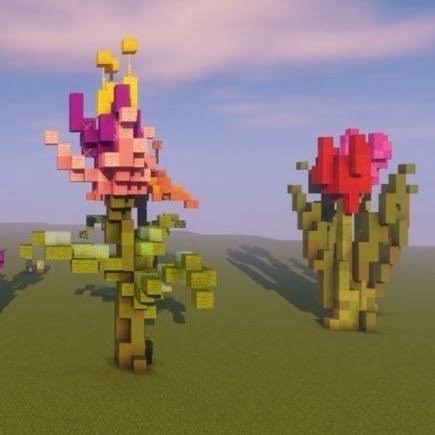Minecraft is a game that blends creativity, survival, and exploration, but one of its most underrated features is the presence of flowers. These colorful plants may look simple at first, yet they play a surprisingly important role in gameplay. From crafting dyes to feeding bees, flowers are both decorative and functional. Once you start noticing how diverse they are, you’ll understand why players often say: “Unbelievable Minecraft flowers!”This article will explore the different types of flowers in Minecraft, their uses, fun facts, and practical tips to help you get the most out of these vibrant blocks.The Beauty of Minecraft FlowersFlowers in Minecraft are not just decorative—they enhance gameplay mechanics and add realism to the world. Their bright colors and unique spawning patterns make each biome feel more alive. Whether you’re building a cottage garden in Creative Mode or farming dyes for banners in Survival, flowers enrich the experience.In fact, many players are amazed by how many features are tied to these plants, leading to the phrase “Unbelievable Minecraft flowers!” becoming a fitting description.Types of Flowers in MinecraftMinecraft features a wide variety of flowers, each with its own look, biome placement, and crafting potential. Let’s break them down:Common Single-Block FlowersDandelion – Bright yellow and common, useful for yellow dye.Poppy – Red flowers that grow in plains and forests, used for red dye.Blue Orchid – Found in swamp biomes, produces light blue dye.Allium – Rare purple flower, generates in flower forest biomes.Azure Bluet – Small white petals with yellow centers, used for light gray dye.Oxeye Daisy – White petals with a yellow center, also used in suspicious stew for regeneration.Cornflower – Blue flower for crafting blue dye.Lily of the Valley – Pure white flower, used for white dye.Tulip VariantsTulips come in four different colors, each spawning in plains biomes:Red Tulip (red dye)Orange Tulip (orange dye)White Tulip (light gray dye)Pink Tulip (pink dye)Tall FlowersTall flowers are two blocks high and have special properties:Sunflower – Always faces east, yields yellow dye.Lilac – Purple flower that makes magenta dye.Peony – Light pink flower for pink dye.Rose Bush – Deep red flower that gives red dye.These tall flowers are especially useful because they can be duplicated using bone meal, making them a renewable source of dyes.Uses of Minecraft FlowersCrafting DyesThe most common use for flowers is dye production. Each flower corresponds to a specific dye color, which can then be used for:Coloring wool, beds, and carpets.Customizing banners and shields.Dyeing glass, terracotta, and leather armor.With so many options, flowers are essential for players who love personalization and creative builds.Suspicious Stew EffectsCertain flowers give unique effects when used to craft suspicious stew:Oxeye Daisy → RegenerationCornflower → Jump BoostBlue Orchid → SaturationLily of the Valley → PoisonThese hidden properties add depth to the game and make flowers more than just eye candy.Bee MechanicsFlowers are vital for bees, introduced in the Minecraft Buzzy Bees update. Bees collect pollen from flowers, help crops grow faster, and produce honey. Planting flowers near beehives ensures a steady honey supply.Decoration and LandscapingPlayers often use flowers to decorate builds, gardens, or pathways. Combined with flower pots, they add detail and charm to homes, castles, or villages.Fun Facts About Minecraft FlowersDirectional Sunflowers: Sunflowers always face east, which can help players navigate without a compass.Biome-Specific Flowers: Some flowers, like blue orchids, only grow in certain biomes, making them collectibles.Bone Meal Duplication: Tall flowers can be farmed infinitely with bone meal, unlike single-block flowers.Flower Forest Biome: This biome generates the widest variety of flowers, making it a favorite spot for dye farmers.These details show why players often exclaim, “Unbelievable Minecraft flowers!” when they discover new mechanics tied to them.Practical Tips for Using Minecraft FlowersFarming Flowers EfficientlyUse bone meal on grass blocks in plains or flower forests to spawn random flowers.Build a flower farm near your base to always have dyes and decorative plants on hand.Creating Dye FarmsPlace tall flowers like rose bushes or lilacs and apply bone meal to generate infinite dyes.Use hoppers and dispensers with bone meal for an automated dye farm.Decorating BuildsMix flower colors for realistic gardens.Use flower pots on windowsills and tables to add detail indoors.Line pathways with alternating flowers for symmetry and beauty.Using Flowers With BeesPlace flowers around beehives to boost honey production.Combine with campfires to safely harvest honey without angering the bees.These practical uses show how flowers can be both aesthetic and functional in any world.Why Minecraft Flowers Are UnbelievableWhen you think of Minecraft, you might picture mining ores, fighting mobs, or building massive structures. Yet flowers bring a subtle richness to the game that’s easy to overlook. They connect farming, crafting, potion-making, and even navigation. Their role in bee mechanics further enhances the eco-systemic balance of Minecraft.It’s no wonder players marvel at the unbelievable Minecraft flowers that make the world feel alive and full of possibilities.ConclusionMinecraft flowers may seem like small details, but their uses, variety, and beauty make them essential for both survival and creative play. From crafting dyes to brewing suspicious stew, supporting bees, and decorating builds, flowers are versatile and magical.

